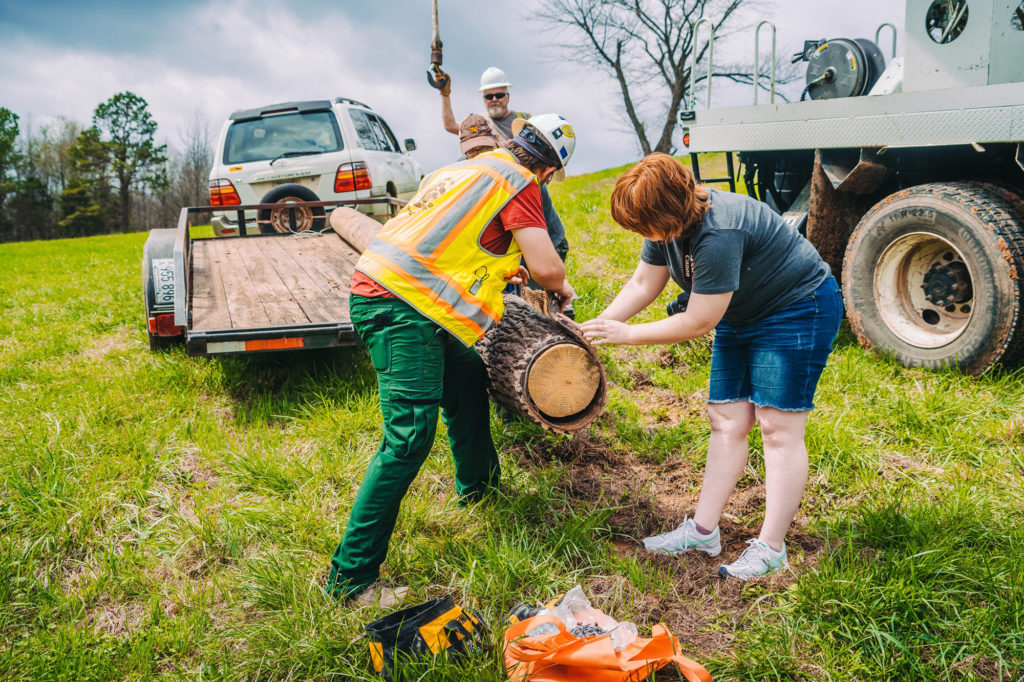
Threatened and endangered bats have a dozen new roosts this summer thanks to the support and innovation of electric cooperatives in Arkansas.
Arkansas Electric Cooperative Corp. volunteered for the bat habitat mitigation project through the U.S. Fish & Wildlife Service (FWS) to reduce potential habitat impacts caused by new transmission line construction.
AECC financed the project and made sure the 12 roosting poles were up and ready for the bats by mid-April in the areas designated by FWS.
“When we build a new transmission line there is potential to cut down trees that bats could have used in spring and summer months for roosting,” said Stephen Cain, manager of environmental compliance for AECC in Little Rock. “The point of this mitigation project was to install some artificial habitat to replace some of what has been removed.”
AECC hired Copperhead Consulting, a Kentucky firm that has worked on Indiana bat colony mitigation and developed BrandenBark, which simulates bat habitat. The G&T’s utility pole supplier donated 12 untreated 20-foot poles that were then wrapped in 3-feet-by-4-feet sheets of artificial bark at the top and outfitted in “eco socks” at the bottom for erosion protection.
A digger derrick or skid steer hoisted these poles and set them all into the ground within a week. Once installed, habitat was immediately provided for the bats.
In addition to the FWS, AECC also partnered with the Arkansas Natural Heritage Commission, the Arkansas Game and Fish Commission and the Nature Conservancy on this project, Cain said.
A University of Central Arkansas graduate student has installed acoustic monitors near the poles and will observe the roosts for two years. A guano catcher installed at each pole will collect evidence of bat presence and provide samples to determine species and other information about the roost dwellers.
Northern long-eared bats and Indiana bats, which gobble pesky insects, are known to roost under bark and crevices of living or dead trees during the spring and summer months after wintering in caves. Both populations have suffered from a fatal fungal disease known as white-nose syndrome along with some loss of habitat.
FWS listed the northern long-eared bat as a threatened species and the Indiana bat as endangered. The little brown bat, which is currently under review for listing by the FWS, has similar roosting habits.
Already, bat activity has been confirmed at two sites where these roosts were hoisted, but it’s too early to know which species moved in, said Cain.
“These bats look for trees that have the bark that sticks out, like a shag bark hickory tree, so they can get up under the grooves between the bark and the tree trunk. These poles fitted with artificial bark simulate that kind of habitat,” said Cain. Unlike dying trees however, the artificial roosts withstand nature’s elements and provide longer term habitat availability.
Cathy Cash is a staff writer at NRECA.